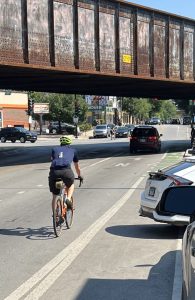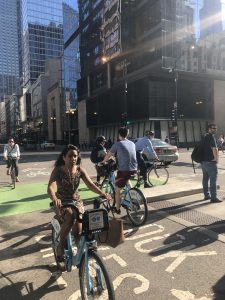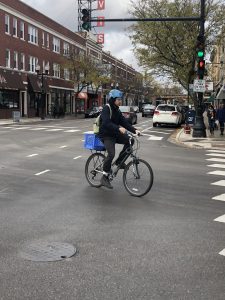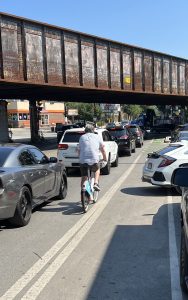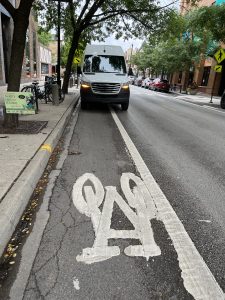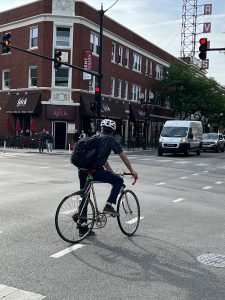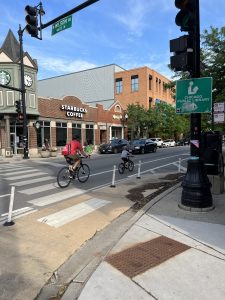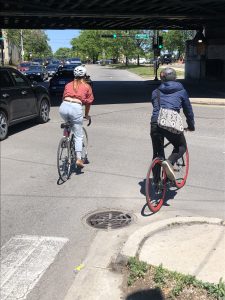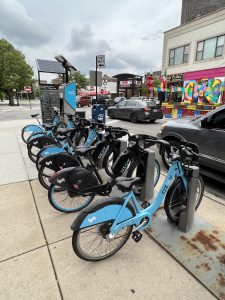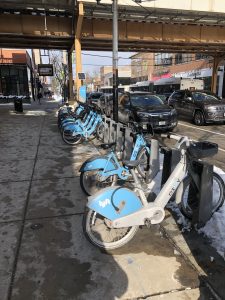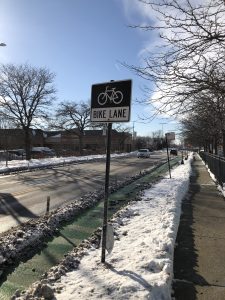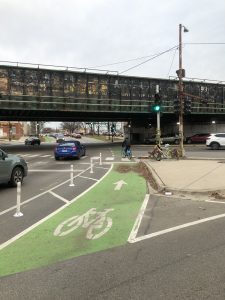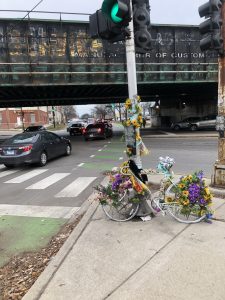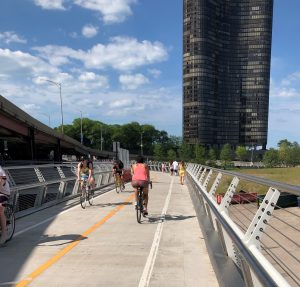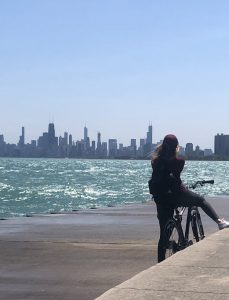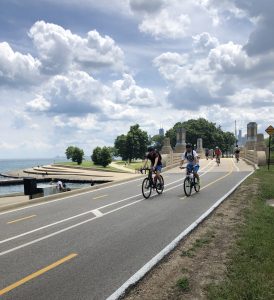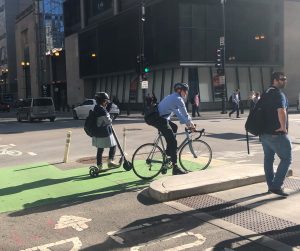Our personal injury law firm litigates a fair number of bicycle injury cases. In some cases the opposing party argues that the bicyclist was negligent because the bicyclist wore dark clothes, which made the biker difficult to spot. The Illinois Rules of the Road caution bicyclists to “Be Visible” and the color of the clothes often becomes part of the litigation.
The law asks what a reasonable bicyclist would do and a reasonable bicyclist follows the rules. Therefore, it is fair to argue that a reasonable bicyclist will ensure that they are visible.
Safety research shows that clothes that are bright or fluorescent and reflective increase safety. For example, according to OSHA, workers who are exposed to vehicular traffic or are working in low-light conditions should wear high-visibility clothing that meets ANSI/ISEA 107-2015 standards. The standards outline the requirements for design, color, and reflectivity of high-visibility clothing, including vests, jackets, and other garments. While OSHA regulations do not apply to bicyclists, it is still recommended for cyclists to wear clothing in bright or fluorescent colors for increased visibility and safety. The use of exciter colors for biking in combination with reflective materials can provide an even higher level of visibility, especially in low-light conditions. Wearing appropriately visible clothing improves biking in a number of ways:
- Increased Visibility: Wearing bright and exciter colors can make cyclists more visible to drivers and other road users, especially in low-light conditions or during inclement weather. This can reduce the risk of accidents as drivers are more likely to see the cyclist and respond appropriately.
- Improved Safety: Fluorescent colors are highly reflective, which means they can be seen from a greater distance. This can give cyclists an added margin of safety, especially when riding in traffic or on busy roads.
- Improved Awareness: By wearing bright and exciter colors, cyclists can attract the attention of other road users and make them aware of their presence. This can help reduce the risk of accidents, as drivers and pedestrians are more likely to anticipate the movements of the cyclist and respond accordingly.
- Better Identification: Wearing bright clothing can help identify the cyclist as a person on a bike, making it easier for drivers to distinguish between cyclists and other road users, such as pedestrians or runners;
- Improved Confidence: When a cyclist is more visible and feels more visible, they can ride with more confidence, which can reduce stress and help them enjoy their ride.
 Chicago Accident Lawyer Blog
Chicago Accident Lawyer Blog


